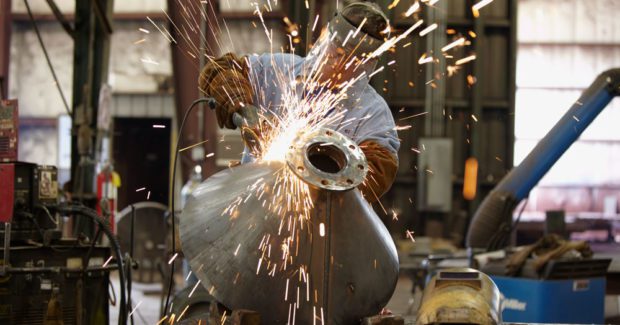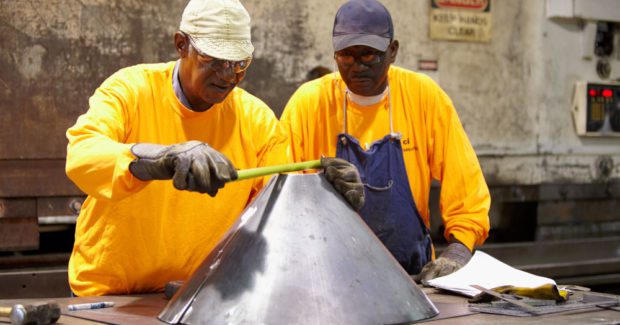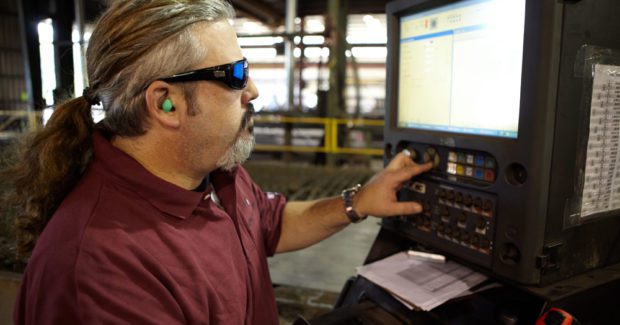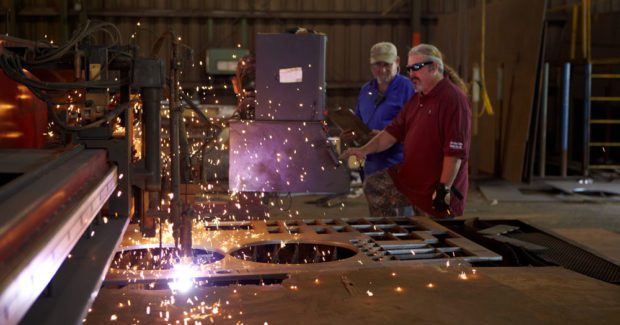A Strong Market on the Horizon
A strong, optimistic coal and natural gas power generation market is increasing demand for custom metal fabricators, who must forget about survival tactics and move toward positive, growth-oriented strategies that can meet the industry’s growing demand. Here’s why.
Posted: January 25, 2017
Coal has been used to generate electricity since 1882, and the first alternating current power station opened in 1902. Natural gas and renewable power began to rise in the 20th century, causing a decline in coal-fired power plants. The Cross-state Air Pollution Rule established by the Environmental Protection Agency (EPA) contributed to coal-fired plant shutdowns across the United States. Coal had been the mainstay for generations because it had been the most cost effective method to produce energy, but newly found deposits of natural gas, coupled with new extraction techniques such as “fracking,” quickly led to natural gas being the most cost effective fuel to produce power. As a result, coal-fired power plants underwent construction from coal to natural gas. Together, coal and natural gas remain the most cost effective means and methods to produce energy.
However, these fossil fuels now carry a negative public perception because the EPA claims coal-fired power plants generate a large amount of air pollution. In 2008, new EPA regulations impacted the activities of the coal-fired power plant industry and resulted in an era of massive decline in regards to metal fabrication as it relates to the power generation industry. In 2014, the coal and natural gas power generation industry began to experience a steady increase as new power generation technologies failed to gain traction, burdening the aging coal and natural gas plants to continue to produce power for the United States. This continued use required equipment repairs and upgrades to sustain the plants and continue producing power.
Entering 2017, demand is increasing for metal fabrication in the coal and natural gas power generation industry. The industry is tightly bound to political policy and EPA regulations, and the current atmosphere is projecting a fossil fuel-friendly environment. The industry is optimistic, forecasting an increased demand in metal fabrication for repairs, replacements, change-overs and new plant construction in coal and natural gas power generation facilities. Companies that specialize in clean coal and ash removal systems should see an increase in demand. Metal fabrication techniques for the coal and natural gas power generation industry have seen limited advancement due to the custom nature of the fabrication required. Typically, each piece of equipment and technology is custom fabricated to the OEM’s boiler and design, eliminating the use of mass production. Custom metal fabrication relies on traditional equipment and the skill of experienced craftsmen to create custom ductwork, casing and other power station equipment.
Alternative energy sources such as wind power, solar power and hydropower present potential impacts on the metal fabrication industry. But their impact is limited because these types of energy sources require large amounts of government subsidies, making them historically unsuccessful. Although the coal and natural gas power generation industry is currently optimistic about government policies and EPA regulations, alternative energy sources and restrictive policies and regulations remain critical issues for the metal fabricating business.
As the economy grows, the need and demand to produce power will increase regardless of government policy or power generation technology. With a strong coal and natural gas power generation market on the horizon, it is necessary to eliminate the survival strategy tactic the metal fabrication industry was accustomed to and move toward a positive, growth-oriented mindset that is able to meet the industry’s growing demand. Custom metal fabricators should prepare for increased capacity to fabricate more steel by hiring additional office staff and equipment operators.
Even in this fast-changing environment of technology and equipment advancements, there is still a need for traditional metal fabrication in many industries that require a lot of custom, one-of-a-kind parts. Super machines may increase productivity and produce more simple fabrication, but there are some pieces that require a hands-on skillset of experienced craftsmen. While upgrading equipment and modernizing the shop to support overall production is a good strategy, having knowledgeable and experienced craftsmen on staff who can pass down the art of the trade to generations is irreplaceable.















